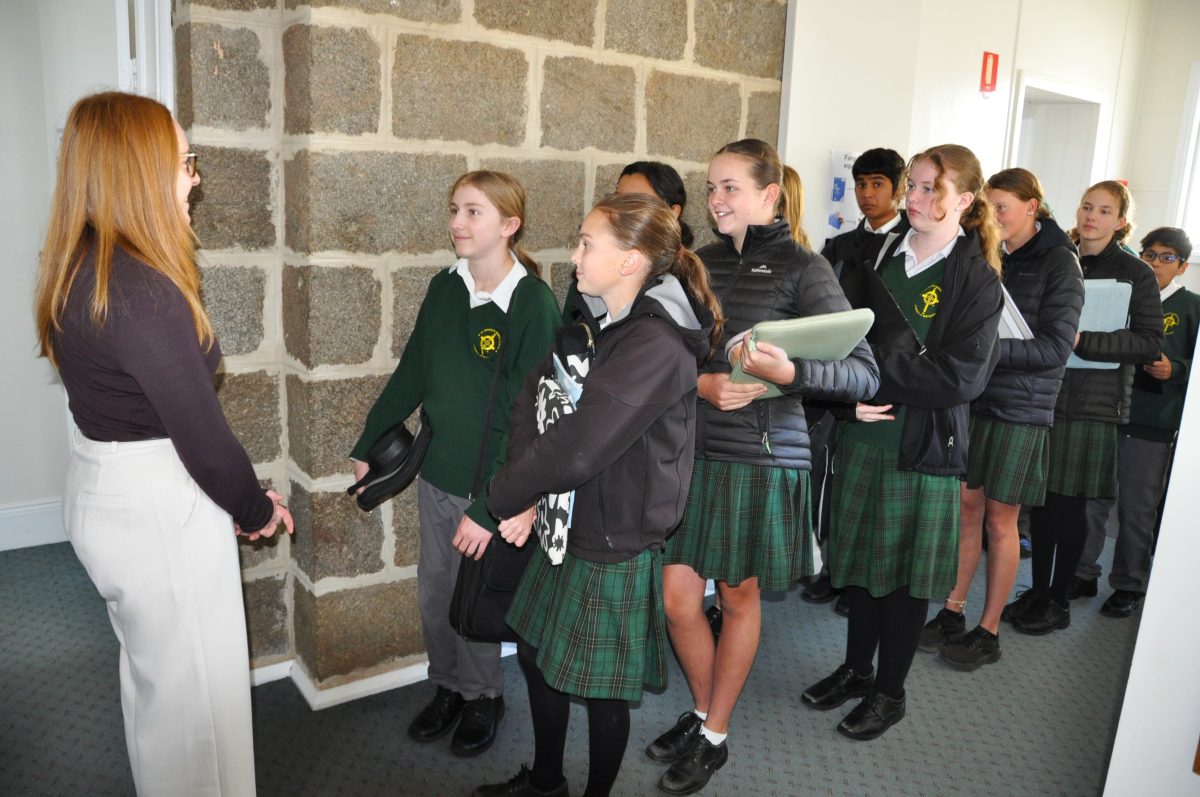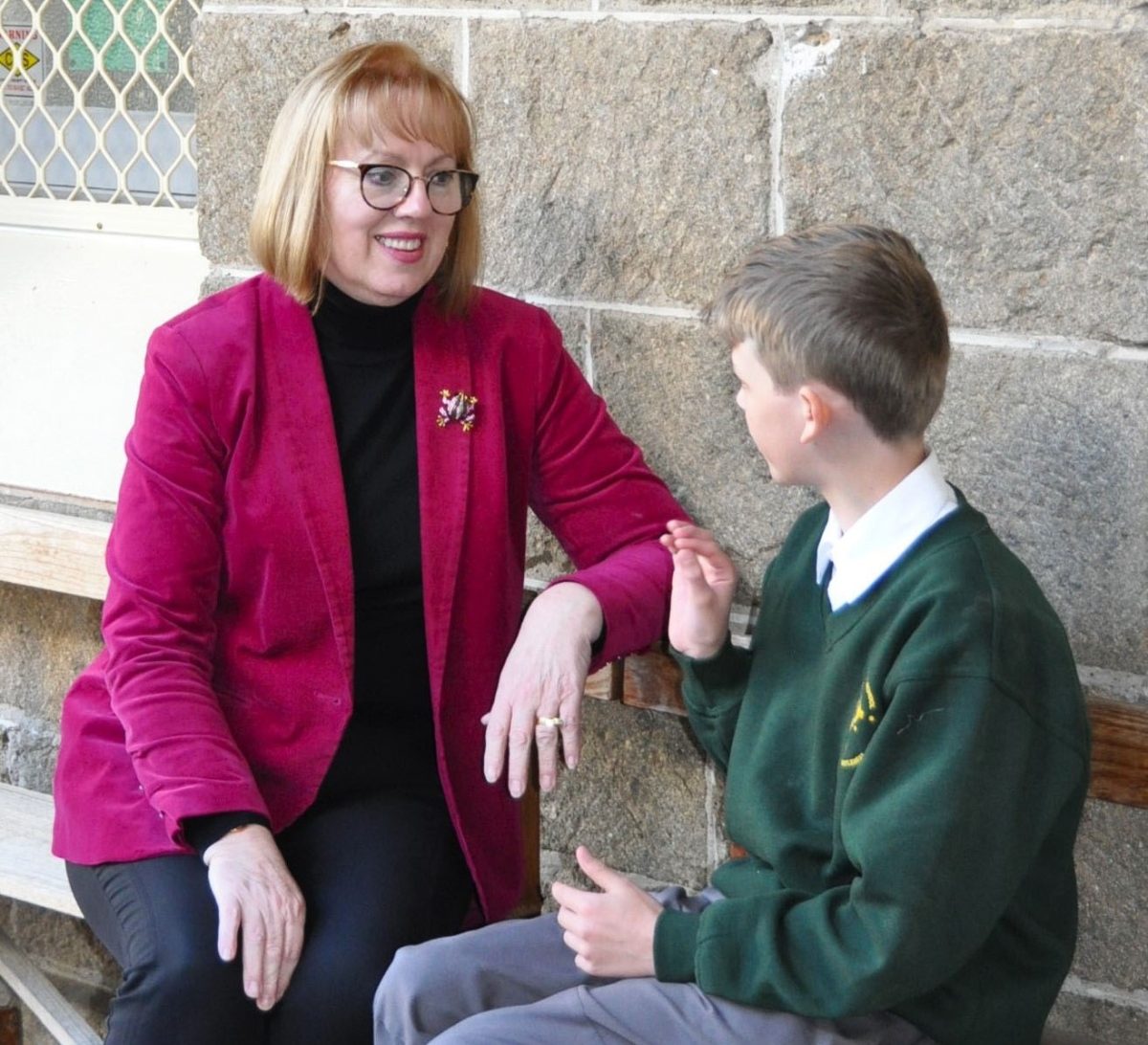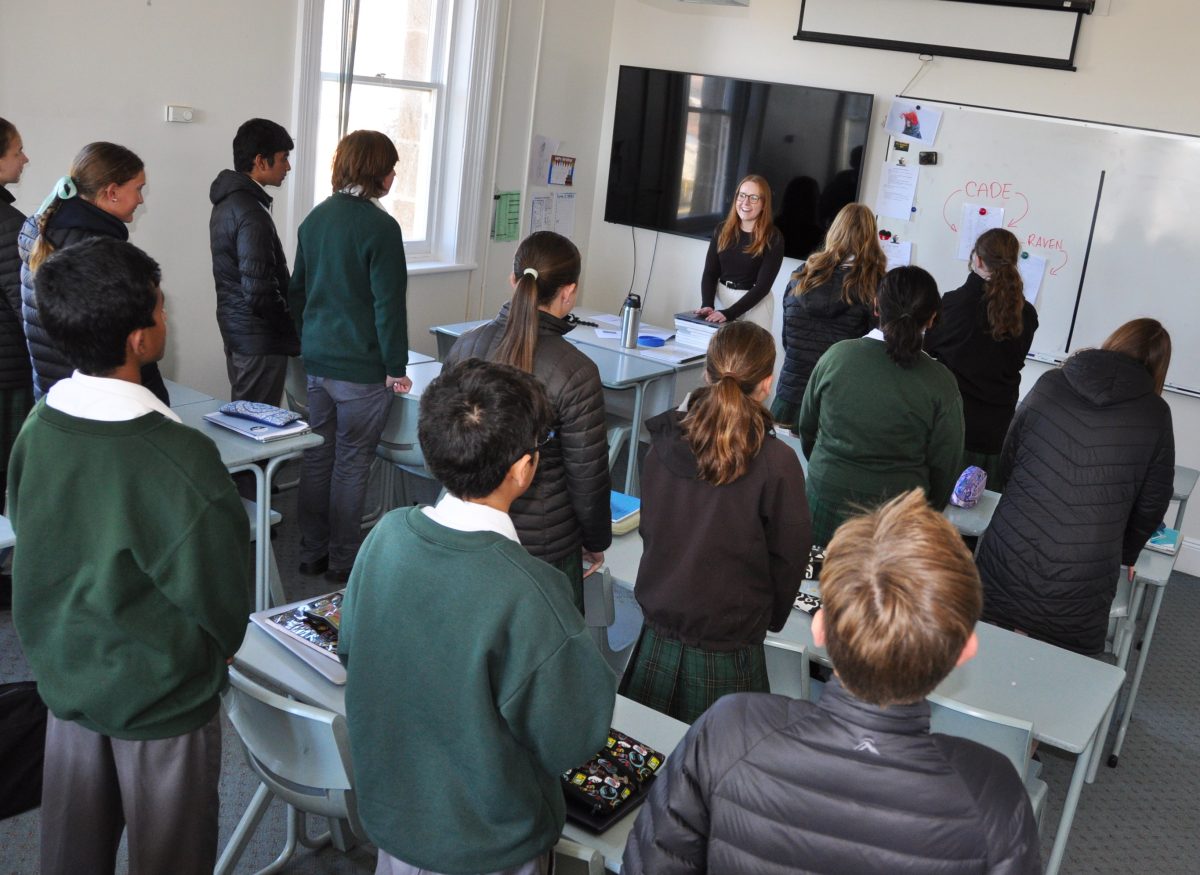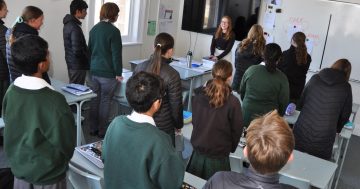
Lining up ready for learning: a class at St Patrick’s Parish School in Cooma. Photo: Frances Robertson.
A quiet revolution is taking place across 10 Catholic schools in the Canberra and Goulburn Diocese.
The schools — including the ACT’s St Clare’s College, Merici College and St Thomas the Apostle School in Kambah — are piloting a program this year that sounds old-fashioned but is backed by the latest research into how children’s brains work.
The Classroom Mastery program developed by leading classroom management expert Dr Tim McDonald aims to provide a calm, safe and predictable classroom environment that enhances learning and makes the most of the time available.
Its sequence of key steps imposes an order on student behaviour that banishes what has generally become a free-for-all before, during and after class in many schools.
Students are required to line up in pairs outside the room, then move quietly into the room and stand quietly behind their desks.
The teacher will then greet the class and ask the students to sit with their eyes focused on the teacher, awaiting a cue to start the lesson.
When it is time to leave the classroom, they clear their desk and put their chair under the desk, restoring the room to how they found it and leave in an orderly manner.
The program also provides teachers with positive strategies to proactively deal with disruption.
It is a response to the fact that Australian schools have some of the rowdiest and least orderly classrooms in the world.
A 2018 Program for International Student Assessment (PISA) study of 15-year-olds found 43 per cent of students surveyed said they were in classrooms that were noisy and disruptive.
This is well above the OECD average of 33 per cent and places Australia 70th out of 77 countries on the disciplinary climate index.
The state of Australian classrooms and the related issue of declining academic performance has been of such concern that it became the subject of a Senate inquiry last year.
Catholic Education Director Ross Fox said coaches helping teachers implement the explicit and high-impact teaching program Catalyst had reported a surprising amount of disruption in some classrooms and that teachers could use some help.
He said CE was aware of work in the UK and had a relationship with Mr McDonald, a former Executive Director of Catholic Education WA.
“We realised that if we wanted to maximise learning time, why wouldn’t we help students and teachers have really clear expectations about how to achieve a calm classroom?”
Mr Fox said other schools in the diocese had also shown interest in the program and were already asking what CE would do next year to support them.
While the program didn’t solve everything, he said principals and teachers were seeing enormous benefits.
“It’s quite effective, and in theory not that difficult. The difficulty is reinforcing the culture and maintaining consistency,” he said.

St Patrick’s principal Frances Robertson with one of her students: making a connection is important.
St Patrick’s Parish School in Cooma is already impressed with the change in culture in its K-10 classrooms.
Principal Frances Robertson said the overwhelming feedback from teachers, students and parents had been positive.
Ms Frances said St Patrick’s did not generally have a behaviour problem but wanted to optimise student learning, and Classroom Mastery complemented the implementation of Catalyst, now in its fourth year.
In a way, the program was what good teachers had always done, she said.
“The difference here is the consistent language across the school and consistent practice,” Mrs Robertson said. “It is also much clearer about routines.”
These set the tone and created a space for learning, along with clear expectations of what students need to do to be ready for learning.
“If we’re trying to reduce the cognitive load of students, we actually have to take away some of that unnecessary thinking that they do,” Mrs Robertson.
“If we want to create consistently productive, calm learning spaces, then students should not have to think ‘where do I go, what do I have to bring?’.”
She said it needed to be automatic so they would have room in their heads to do the learning required of them.
Mrs Robertson said the program was also about creating positive relationships through teachers making a regular connection with students.
“It’s important that there is a point of connection with the teacher at entry and exit so the teacher can greet every student,” she said.
“At exit, the teacher has an opportunity to say thanks for the lesson, these are the thing we’ve learnt, and look forward to seeing you tomorrow. For some kids, that’s critical.”

Mrs Robertson says the program is not oppressive but an invitation to order and calm.
The calmer environment also made it easier for teachers to identify students with learning problems, and it was a gift for students with autism or ADHD, who benefited from a predictable and safe environment.
“We need to take away the flight or fright responses of some students when things are chaotic,” Mrs Robertson said.
For teachers, it meant no more wasted time.
Mrs Robertson said a recent national behaviour survey found 70 per cent of teachers reported losing up to 10 minutes every 30 minutes of lesson time.
“Even if it’s only a minute, it still takes away from learning,” she said.
“We’ve got 55 minutes, by the time they come and go, of learning time. We want 55 minutes, not 54 or 50.”
Mrs Roberston rejected the view that the program was about learning to conform or stifling individuality.
“It’s not a military-style operation,” she said. “It’s an invitation to order and calm.”
It was consistent but not rigid or punitive and easily adapted to the differing age groups across the school or classroom context.
“This is about bringing the priority back to learning and doing it in a relational way,” she said.
“School’s got to be a good place, where you know what you’re doing, where you’ve got to be, what you need to have and somebody’s going to say hello to you.”
Mrs Roberston believed most schools would adopt this approach, but it needed to be part of initial teacher training and adopted in universities.
St Patrick’s will survey teachers, students and parents as part of its evaluation, which will be submitted to Catholic Education, but Mrs Roberston said the school would continue the program beyond this year’s pilot.
Mr Fox said there was an appetite for change in Australian education.
He said NSW had adopted explicit teaching and the Melbourne Archdiocese had a new approach to learning and teaching similar to Catalyst and was also piloting a calm classroom strategy.
The ACT literacy and numeracy inquiry recommendations also aligned with very sensible approaches to learning and teaching, sought to reduce workloads for teachers and ensure the vast majority of students were reliably learning, Mr Fox said.





















